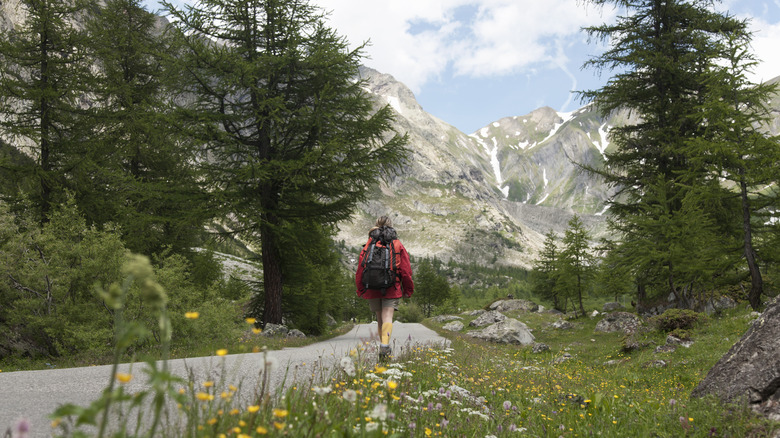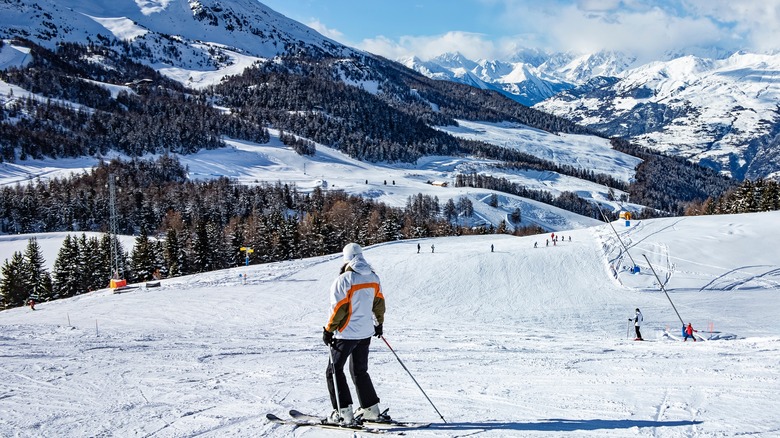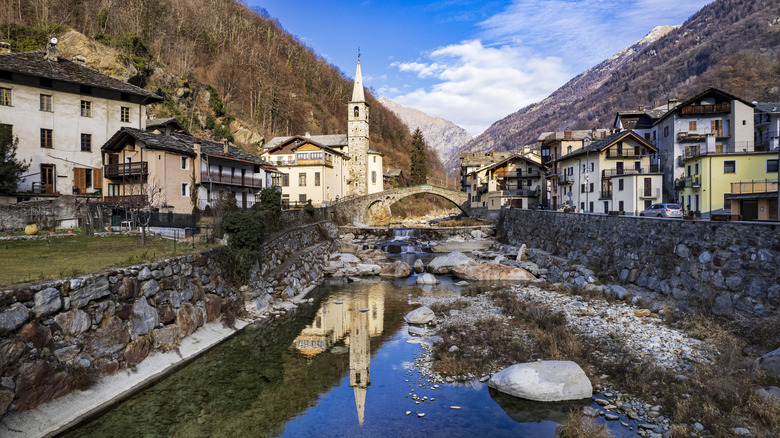This Unique, Mountainous Corner Of Italy Offers Top-Notch Outdoor Adventures
If you're a thrill seeker looking for top-notch outdoor adventures in one of Italy's most unique mountainous corners, Aosta Valley awaits. Valle d'Aosta is a province, city, and region northwest of Italy, bordering Switzerland and France. It's the smallest (1,260 square miles) and least populated (123,000 inhabitants) of Italy's 20 regions.
Valle d'Aosta is bilingual — Italian and French-speaking — and this is the result of a complicated history. The region dates back to 23 BC when the Romans founded it after conquering the native Salassi and naming it the "Valley of Augustus." With such historical roots, it's no wonder this place has been dubbed the "Little Rome of the Alps." However, in 1536, the Duke of Savoy changed the official language of his kingdoms (including Aosta) from Latin to French, making this the first government to adopt French as a language (even before France!). Even if you don't understand Italian or French, you can still visit here using Rick Steves' tips for traveling to a destination where you don't speak the language.
Officializing the Italian language, however, came centuries later when Valle d'Aosta was offered special legislation to join the Republic of Italy. But it wasn't until proper recognition at the end of World War II that Aosta was granted French linguistic and cultural autonomy. So why not kick off your adventure with some history? Check out Aosta's stunning medieval castles and ruins, as well as the many well-preserved Roman monuments, such as the Arch of Augustus and the Roman Theatre.
Valle d'Aosta: natural landscapes and activities to enjoy
Valle d'Aosta's adventurous magic is in its natural landscape, most of which can be enjoyed year-round. It has some of the highest peaks in Europe and some of the world's greatest mountains, including Mont Blanc. Hikers should check out the oldest national park in Italy, suitably named Gran Paradiso National Park. It spans 270 square miles halfway across the Aosta Valley, with the other half being in Piedmont, another mountainous Italian region that's great for a food and wine vacation. The closest trail to Aosta is the Col du Petit Mont Blanc via Sentiero Arpilles, near Introd. This 7.7-mile out-and-back trail is no easy feat, but rewarding scenic views and diverse wildlife, like ibexes, make the six-hour hike well worth it.
If you're looking for a level-up, challenge yourself with climbing. One great site is Corma di Marchaby in Cubo di Arnad. This bolted route takes place on a marvelous slab of smooth gneiss (high-grade metamorphic rock) and has a 6 to 10 pitch, making it perfect for intermediate climbers.
Another element that makes Valle d'Aosta truly unique is its year-round winter sports. With perennial snow on mountains like Matterhorn, Mont Blanc, and Monte Rosa, along with beautiful landscapes around the city, the region is a winter sports heaven. Additionally, ski resorts like Courmayeur, Cervinia, Pila, and La Thuile are among some of the best in Europe, offering excellent facilities and a variety of slopes to suit all abilities.
Cuisine, accomodations, and tips for travel
As a mountain valley, foodies can expect hearty cuisine and traditional rustic hospitality in Aosta. One of its most famous dishes comes from one of Italy's most well-known cheeses, Fontina. Fontina has been locally produced in Aosta for centuries and has since been a cultural treasure, creating delectable valdostani dishes like fonduta (an Italian fondue). Additionally, winter adventurers can look forward to body-warming dishes like carbonada, a beef stew cooked with red wine, onions, butter, pork belly, nutmeg, cinnamon, and flour, and seupa à la Vapelenentse, which is a layered dish of cabbage, bread, and local Fontina cheese cooked in beef stock.
But, before eating in Aosta, consider staying there for a night or two. It's a charming town with a wide variety of accommodations. Luxury hotels like Nira Montana, known as La Thuile's first five-star hotel, have large, tastefully designed Italian rooms with an in-house spa. But who needs luxury when you have beautiful family-run stays in the historic center, like Domus Antica Aosta? If you want to be closer to outdoor activities, then consider Villa Novecento Romantic Hotel near the Mont Blanc massif. To get to Valle D'Aosta, you can take the Italo high-speed train from major hubs like Roma Termini to Torino Porta Nuova. From there, transfer to a regional train that will take you directly to the city center of Aosta. This journey typically takes approximately seven hours, and keep in mind this train travel tip to avoid getting stuck.


